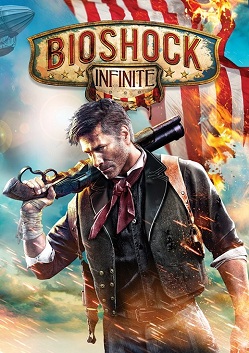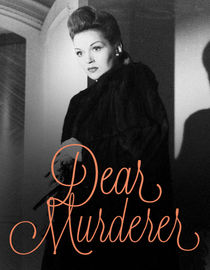Bioshock: Infinite is the third installment in a series of first person shooter games based upon exploring destroyed utopian societies. First, we saw Rapture; An underwater society built by a Russian philosopher who sought to create a paradise of freedom and prosperity. Then, we saw Rapture through the eyes again, but this time through the eyes of one of its inhabitants. Now, we are viewing a new world; the only difference being that this one is still alive. You get to experience firsthand the horrors that play out in the beautiful floating island of Columbia; The question is, is it worth the dough?
Let me start off by saying that I will not reveal any spoilers in this review. I love the story of
Bioshock: Infinite and I want all of you to be able to experience it yourselves.
But now that we're on the subject, lets talk about the story. This game's story appears mediocre at first glance: "Guy finds floating city, guy must find girl and give her to some shady businessman who in return promises to "wipe away" his debt. Pretty simple, right?
Wrong. The game's plot gets very interesting further on in the game. It also gets extremely complicated, but never enough to make your head hurt.
Bioshock: Infinite also balances story pacing and game-play wonderfully, spacing out the story segments to allow for action, and vice versa.
Again, I won't talk too much about the plot, because I don't want to give anything away. However, I will say that the narrative is very well written and engrossing from start to finish.
The moral choice system however, is very underused. I was sad to see that almost none of my choices seemed to matter in the long run, unlike the first two games which took full advantage of that system with the "little sister" dilemma. The first games had multiple endings, whereas this game only has one. Even if the ending is amazingly well done compared to the first two game's endings, I have to take off points for the fact that your choices don't really matter.
Moving on, the game's visuals are
breathtaking. The texture quality is great, the anti-aliasing is up to date, the draw distances are exceptional, the skyboxes are stunning, and the game's world feels alive and thriving. You feel immersed as you explore this beautiful land in the clouds, and never feel detached from the experience. Even on the lowest graphical settings, the game still looks up to date. Its graphics are on par with Tomb Raider, and never cease to amaze.
The sound design is also exceptional. The soundtrack keeps your blood pumping as you blast baddies and the voice acting is phenomenal.
The AI is spectacular. Enemies take cover when under fire and Elizabeth feels alive and breathing. When you're not under attack she will lag behind and explore the environment until you're ready move on. She will rest on walls and skip rocks while idle, as well as throwing you supplies and opening "tears" during combat.
Tears are doors to another world, as Elizabeth puts it. And she can control them with the snap of a finger. Tears can prove invaluable during combat as they can conceal friendly turrets, med-kits, cover, and guns as well as other useful supplies.
"Tears are doors to another world, as Elizabeth puts it"
In terms of game-play,
Bioshock: Infinite also excels. While the gun-play is not exceptional, the game keeps combat engaging with sky-lines and vigors. Sky-lines allow the player to zoom around the battlefield and get from one place to another with ease. You can launch yourself from sky-lines to slam down on opponents, or you can shoot from above. This is improved upon even further by the addition of being able to control your speed. You can come to a halt, or speed through the clouds with just the press of a button.
All of this makes using the sky-lines feel fantastic and exciting throughout the entire game, not to mention it's pretty useful in a pinch.
And then there's Vigors. Vigors are to
Bioshock: Infinite as Plasmids were to the original. In a nutshell, Vigors are abilities that allow you to change combat in many ways. For instance, there's Bucking Bronco, which allows you to launch enemies into the air and stun them while you whittle away at their health bars. Then there's Return to Sender, which basically acts as a shield. All of these Vigors also have alternate abilities which are triggered when you hold down the button for a couple seconds. The vigor "undertow" for instance, has the alternate ability to grab enemies from afar and pull them in close allowing you time to hit them with fire, bullets or whatever you prefer.
All of these Vigors are powered by "salts" which can be replenished by eating certain foods or
 |
| A Vigor |
drinking certain liquids found around the game. Two Vigors can be hot-keyed at all times, so combinations are possible and useful.
Along with all this, the game offers vending machines throughout the game where you can stock up on ammo, health, and salts as well as upgrade your guns and plasmids.
The battlefields are also fantastic. You will find yourself in the destroyed city of Columbia, flying through the skies on airships and battling through buildings throughout the game. The enemy variety is fantastic and the distinct enemies that you will encounter never fail to remain interesting and fun to fight.
The game managed to capture my interest the entire way through, and I almost never felt bored. The only area during the game in which I felt like I didn't want to play was about mid way into the story and lasted about an hour. Now, I won't spoil anything, but it was very dull and repetitive; However, it didn't last very long and after it was over I was back into the mood of the game. After that sequence, the game didn't lose my interest again.
The final battle was slightly disappointing, because throughout the entire game you expect to clash heads with
"Songbird" (a giant mechanical creature that's soul purpose is to protect Elizabeth from anyone that wishes to take her away or harm her), yet you never get to. It's quite a missed opportunity and I feel that zipping around the sky while blasting away at the creatures eyes would have been an amazing experience.
With all of this said, I still think that this game is one of the greatest games of last year, and it is definitely 100% worth your money. Everything feels smooth and polished, the game-play is fun and fresh, and the story is one of the best that has been told this year.
I highly recommend
Bioshock: Infinite to anyone who enjoys shooters or story driven games.
-Rowan L. (guest blogger)























